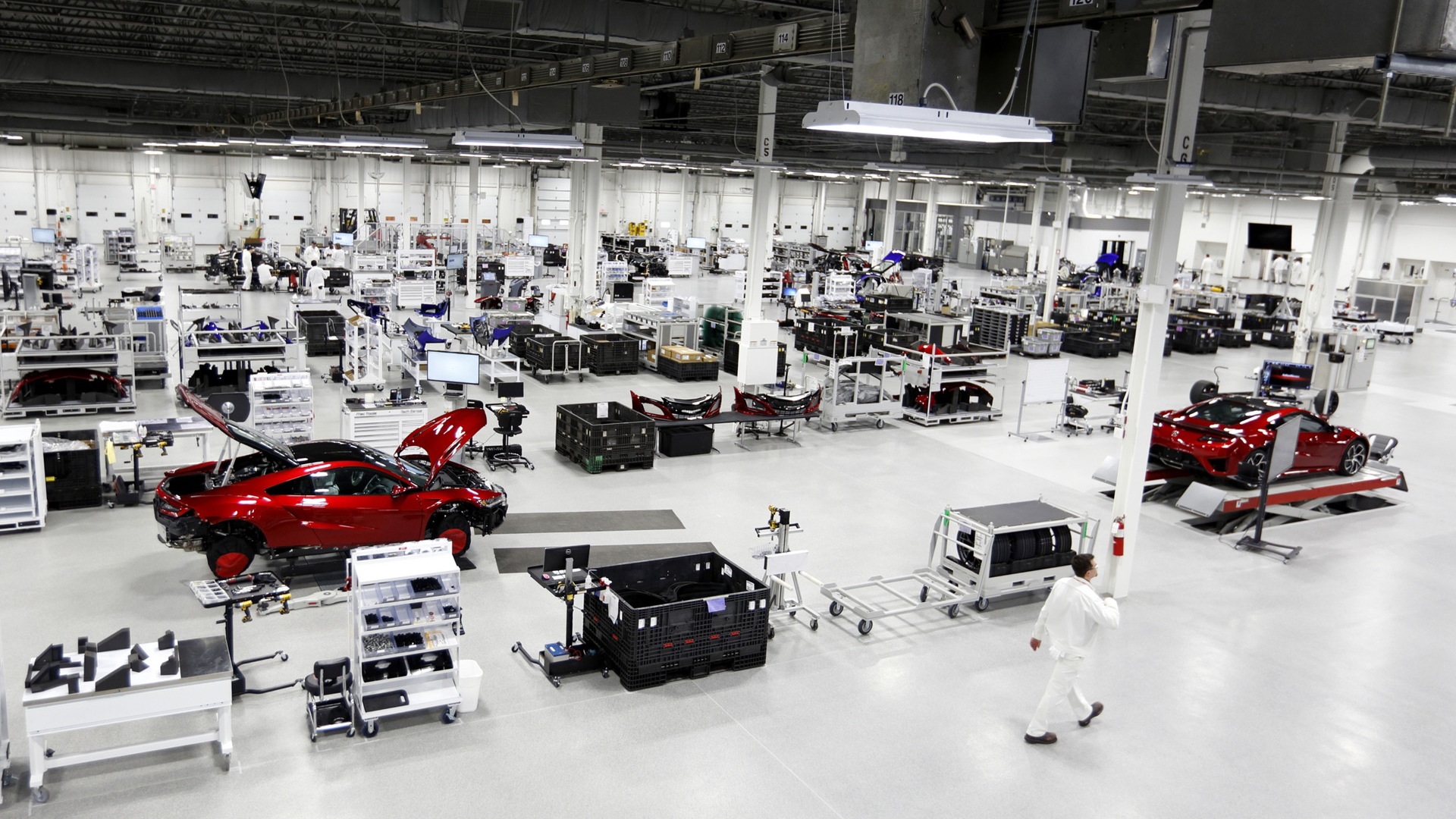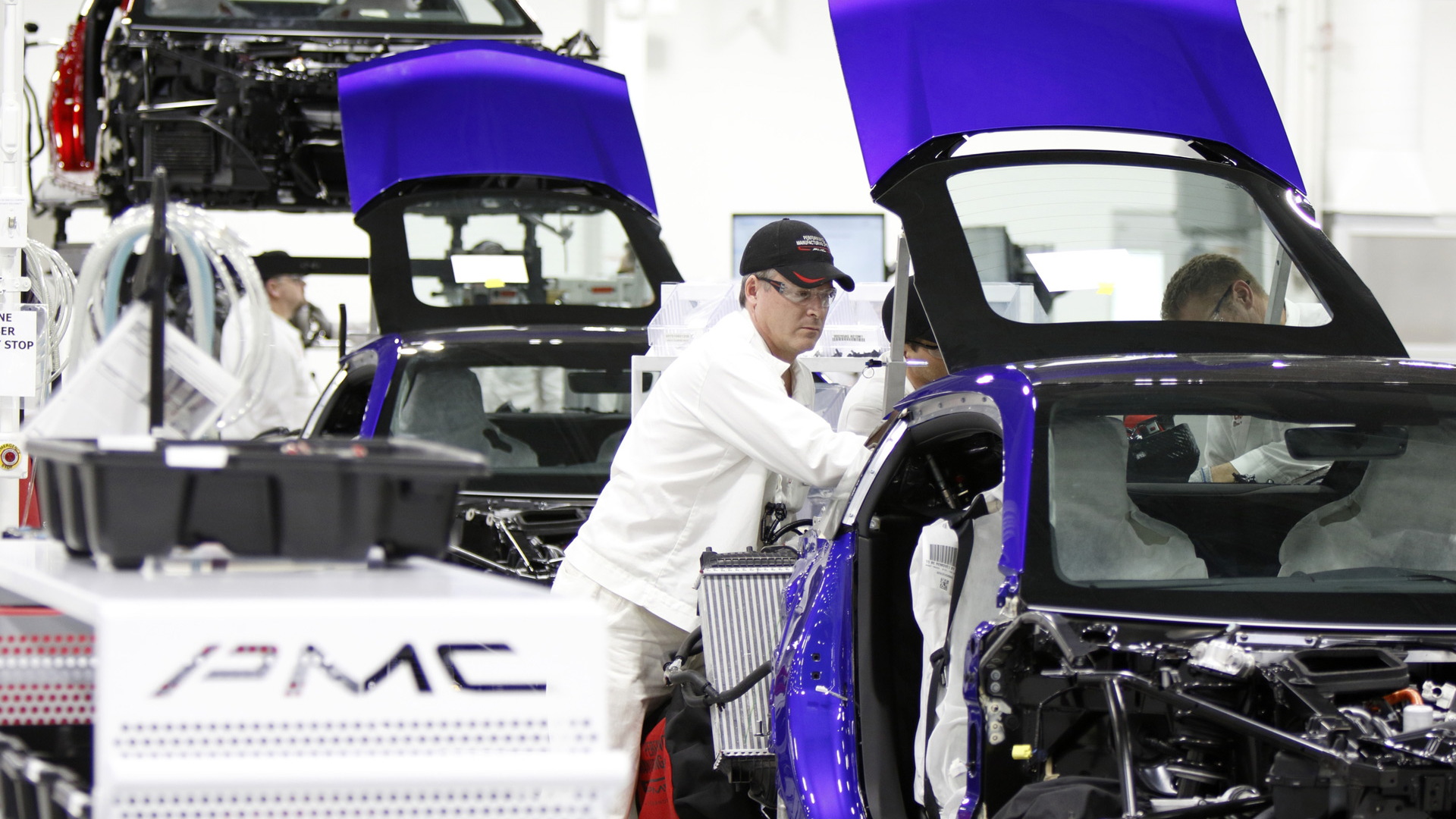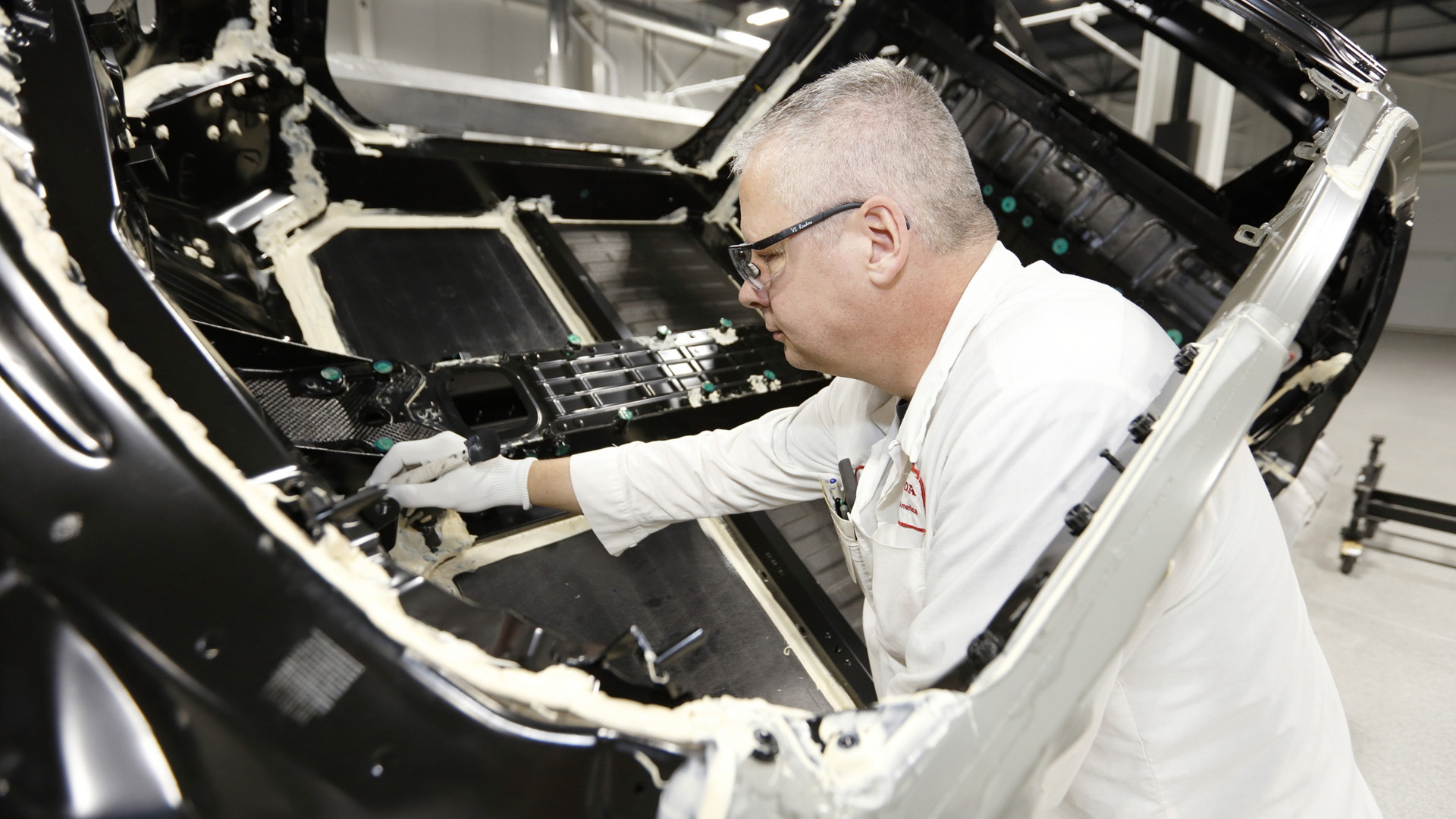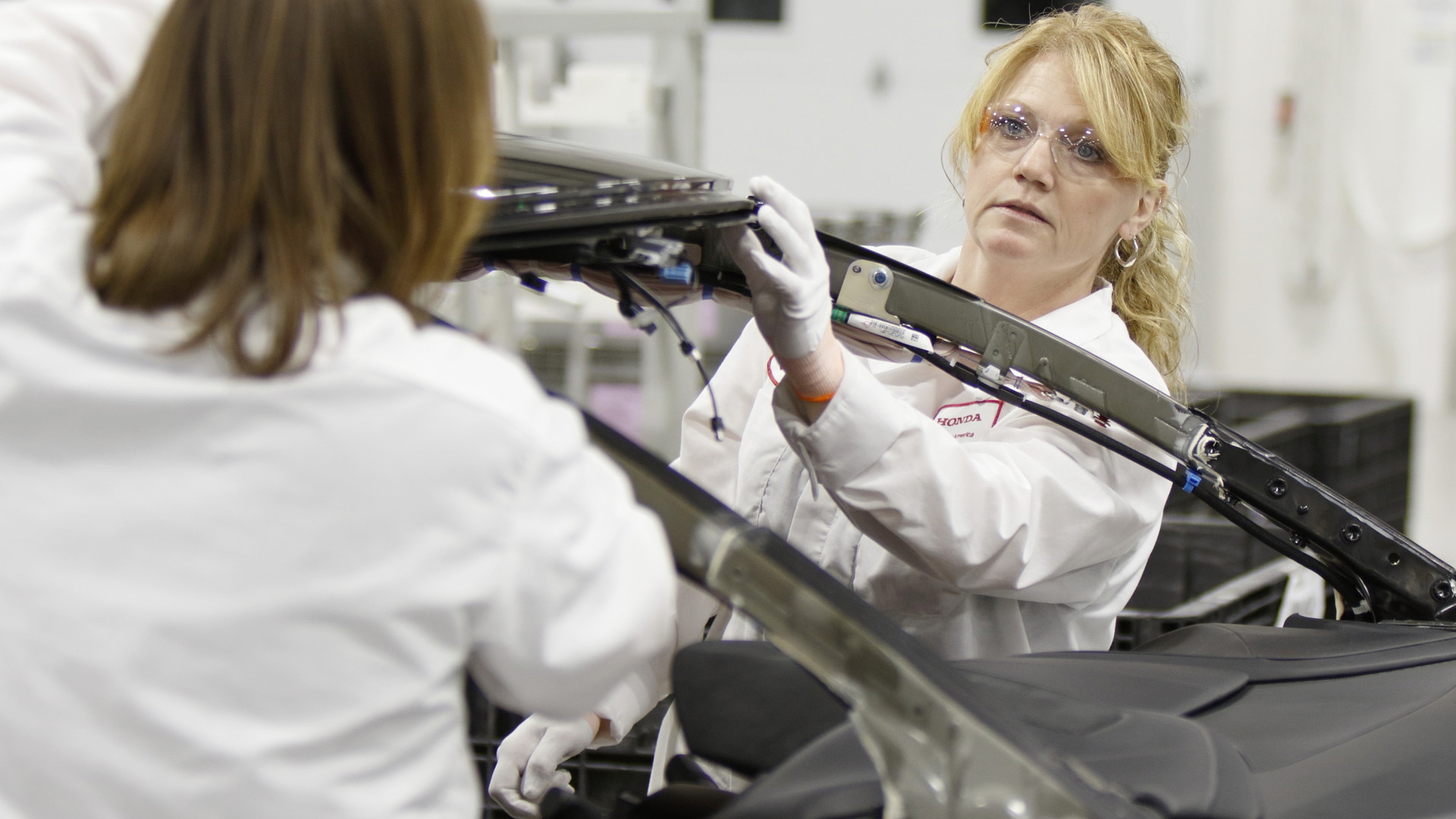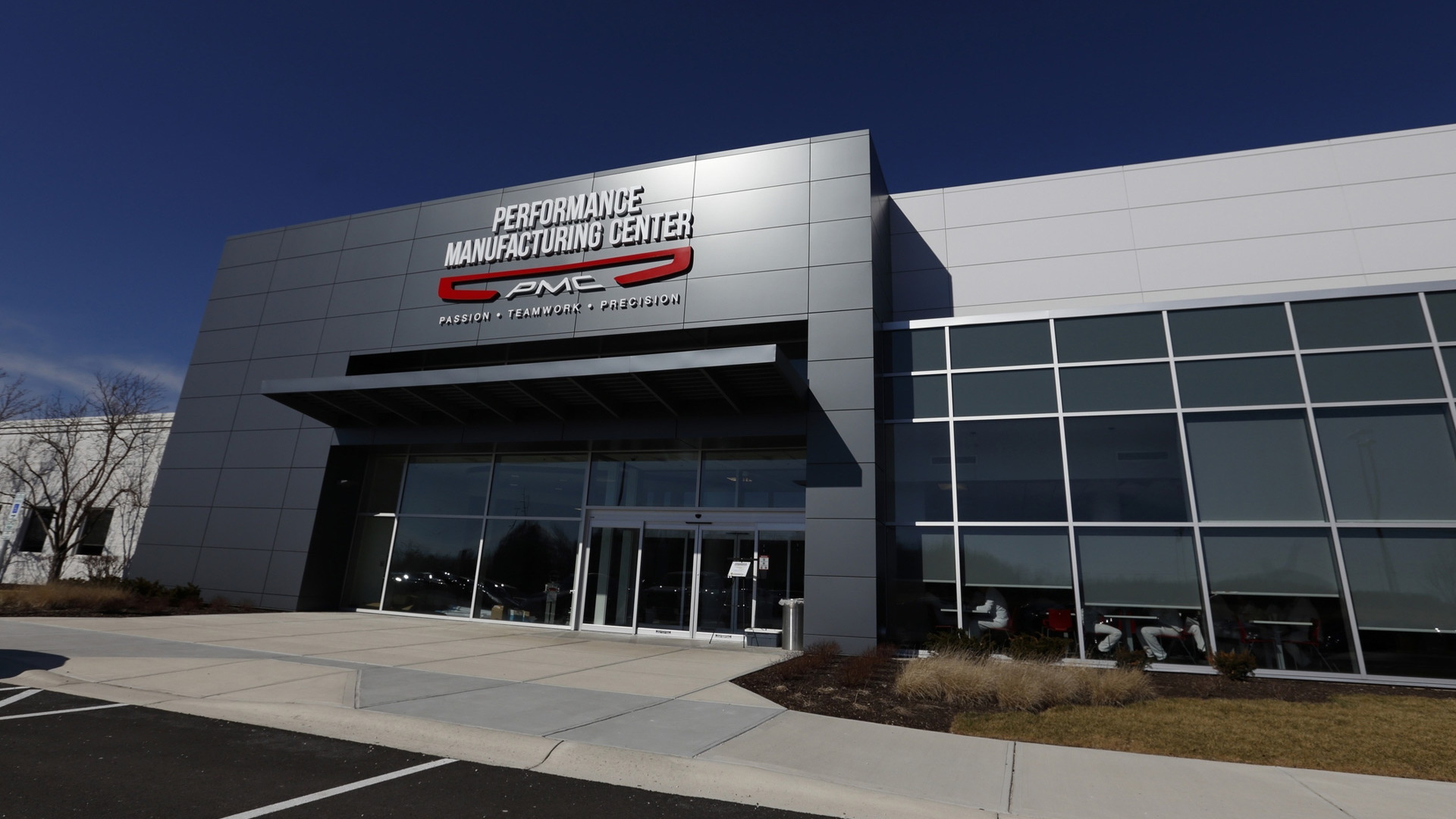Acura’s new NSX finally enters production this month, and ahead of the first customer examples rolling off the line the Japanese brand has dropped a few production secrets.
Production is taking place at a dedicated facility known as the Performance Manufacturing Center (PMC). The facility is located in Marysville, Ohio, close to where much of the development work for the NSX took place. It’s also close to Honda’s Anna engine plant where the NSX’s 3.5-liter V-6 is sourced.
ALSO SEE: R34 Nissan Skyline GT-R crashes at the Nürburgring
Why the United States this time around and not Japan? Early on, chief engineer Ted Klaus said the new NSX is first and foremast an Acura—though it will be badged a Honda in other markets—and since the U.S. is the primary market for Acura it’s only natural the car is developed and manufactured here.

2017 Acura NSX internal view
This decision was not made lightly. It meant a new approach to vehicle construction, paint, assembly and quality confirmation was required for an Acura plant in the country, due mostly to the NSX’s aluminum-intensive spaceframe structure and low volumes. Some of the processes were so new that Acura had to file 12 patents. Most of these are said to be in the area of quality control.
The process starts with the manufacture of the spaceframe, which is done mostly by robots. Eight weld robots apply 860 MIG welds to form a single structure. Ablation casting, which is rarely used in the automotive industry, is also employed for some structural parts, namely six key nodes in the structure. This process is said to provide the design flexibility and rigidity of traditional casting with the ductility and energy absorption characteristics of extruded material. After this, the structure is treated with a corrosion-resistant primer using a zirconium-based material.
CHECK OUT: Mechanic drops new Porsche 911 GT3 RS in waterway
The engine is sourced from the nearby Anna engine plant and each unit takes over six hours to assemble. Most of the components are hand assembled and each of 547 bolts is hand started and manually tightened to precise torque tolerances. After this, the engine is machine balanced, bench tested and broken-in to the equivalent of 150 miles to ensure it’s ready for track duty straight from the factory.

2017 Acura NSX internal view
Installing the engine plus the rest of the powertrain components as well as the suspension, electronics, interior components and exterior body panels takes around 14 hours. Unlike conventional cars with unibody construction where exterior panels are attached in welding, the spaceframe means body panels are actually the last parts to be installed. This panels feature as many as 11 coats of primer and paint.
During the production process, the car makes multiple visits to a glass-enclosed quality control center in the middle of the plant. This allows technicians from every department to monitor all aspects of a vehicle as it moves through the production process.
The final stage is performance testing. This includes a 45-minute wheel alignment process, four-corner weight and ride height check and precision measurements of brake performance, along with other critical performance quality checks.
_______________________________________

